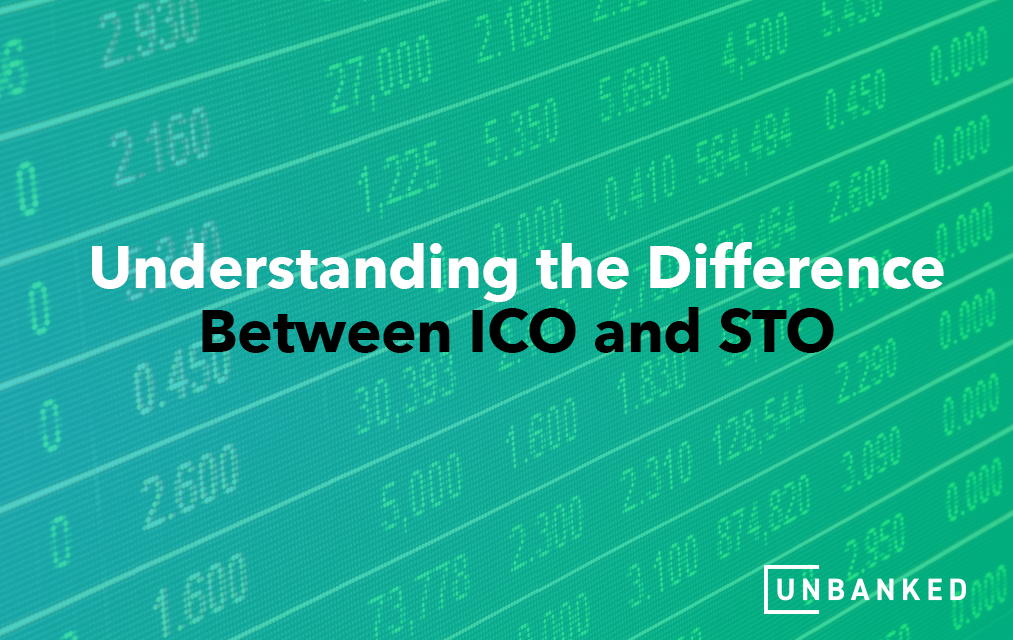With cryptocurrency investment becoming a more adopted practice and more people trying to make significant profits within the marketplace, an Initial Coin Offering (ICO) and Security Token Offering (STO) provide investors with the physical tools that represent their investment. Both offerings see investors receive a crypto coin or token to represent the investment. However, unlike ICO tokens/coins, STOs include underlying financial assets such as stocks, bonds, and Real Estate Investment Trusts (REITs).
ICOs and STOs are crowdfunding solutions that investors can use to legitimize and maximize their investments. However, aside from the underlying assets, investors should know other differences between ICOs and STOs before using them.
How Do ICOs Work?
Initial coin offerings are created to raise as many funds as possible within an unregulated environment. A lot of ICOs purposely position themselves to circumvent traditional financial regulations, with many ICO founders and project leaders insisting that they distribute user tokens so people can seamlessly access their native platforms or distributed applications (DApps). ICOs have grown in popularity over the years because ICO projects avoid registration with the Securities and Exchanges Commission (SEC) or other financial governing bodies.
Despite the added freedom that ICOs provide, they also have been linked to several fraud cases, with several schemes and scams pumping high amounts out of investors, putting them in financial freefall.
There have been exit scams where founders run away with the investor’s money after the initial coin offering. There has been phishing where emails promising high returns are sent to investors, and when the emails are clicked upon, hackers steal sensitive information to take hold of crypto trading accounts. And there has been crypto market manipulation. Several ICOs leverage unfair practices to manipulate the cryptocurrency market to fool investors. These practices include falsifying images of trading activity or pumping their liquidity with unique crypto tokens to make investors think the digital currency is performing well.
To identify ICO frauds, it’s recommended that you read the whitepaper, the informational document detailing the features of a company’s ICO to ensure their legitimacy.
STOs Focus On Offering Regulatory Governance
Security token offerings, by contrast, are an alternative crowdfunding measure centered around governance, registered with government agencies, and meeting legal requirements. STOs require companies providing offerings to do significant compliance work in advance before proceeding. Only
fully compliant and accredited companies can buy/sell securities tokens.
While STOs provide the barriers of entry that ICOs don’t and contrast the very nature of cryptocurrency investment, they guarantee investment security and are more mature than ICOs. Additionally, security token offerings allow investors to acquire underlying assets that are deriving their values from other sources like stocks or bonds. The tokenized offering is typically offered on a permission or permissionless blockchain, representing a stake in external enterprises or assets for willing investors.
Security token offerings are registered with the SEC and capitalize on securities exemptions such as the Reg A+ exemption. Furthermore, tokens that are issued in STOs provide investors with rights to the organizations or firms that issue them.
What Types of ICOs and STOs Are Out There?
Crypto investors can opt for public and private ICOs when exploring the offerings. With private ICOs, only a limited number of investors can be involved in the process. Public ICOs are offerings that target the general public.
One form of ICOs is utility tokens, also known as app coins. These tokens allow people to access future startup services. ICOs also come as reward tokens offered to investors that left a positive imprint/impression on the blockchain. And there are equity tokens that are distributed to specific investors, giving them rights to portions of a business.
STOs also come in the form of equity tokens that operate similarly to traditional stocks. But, ownership is transferred and recorded differently. Plus, equity token holders hold voting rights and are entitled to a firm’s profit.
There are also debt tokens that represent short-term loans on interest rates. Regarding blockchain technology, smart contracts live on the blockchain network, representing debt security. Throughout the contract, repayment terms are defined, dictating dividend models and risk factors of underlying debts.
Furthermore, asset-backed security tokens represent the ownership of assets such as art, real estate, commodities, and carbon credits.
What are the Advantages That ICOs and STOs Offer?
ICO Advantages
Despite the fraud concerns that come with ICOs, they have fewer barriers to entry and don’t restrict investment opportunities to just accredited investors. ICOs have positive network effects, and token distributions are easily automated, and some ICOs permit autonomous participation. Successful initial coin offerings only need well-executed digital campaigns to generate the interest they desire. Whenever a crypto coin raises its price and the team involved comes through, investors maximize their profit-making capabilities.
STO Advantages
STOs, while reducing the pool of investors who can access them, guarantee security for investors. Plus, securities tokens are usually traded through broker-dealers, which are monitored frequently by regulators. Security tokens are seen as the next step in the traditional financial landscape with less market manipulation and speculation.
Security tokens offer constant transparency. On blockchain networks, everything can be audited including the identities of participating investors. Everyone on the network can view the ledgers to track holdings and the issuance of tokens, but fungible and non-fungible tokens (NFTs). Furthermore, security token offerings are known for their availability. Most financial marketplaces run via their schedules, usually during business hours, with the manual effort needed. Marketplaces that run on blockchains are constantly active regardless of the time of day. Also, security token offerings settle trades instantly and with automation. STOs remove the traditional waiting game when transferring assets, with settlement and clearance typically holding up investors.
While STOs require higher upfront investments than IPOs, they make it easier for investors to attain fractional ownership of products as they are digital assets that divide huge assets into smaller ones. Given the underlying assets and added securities, more investors find security token offerings attractive compared to initial coin offerings.
Want to know more about crypto tokens and how they work? Check out our resources to learn more about different tokens, their benefits, and their values.





